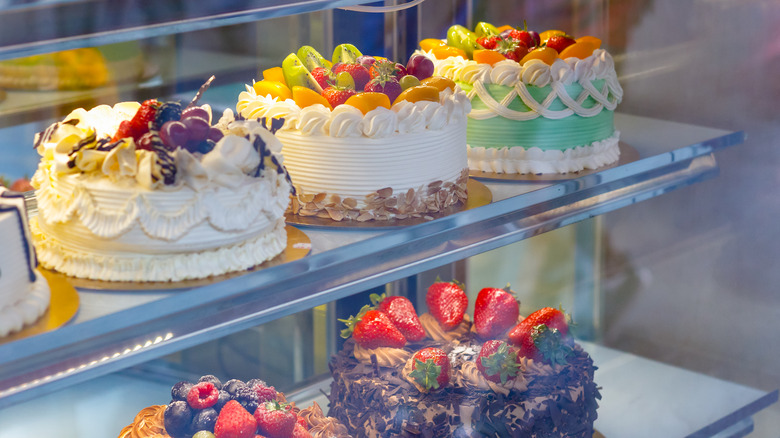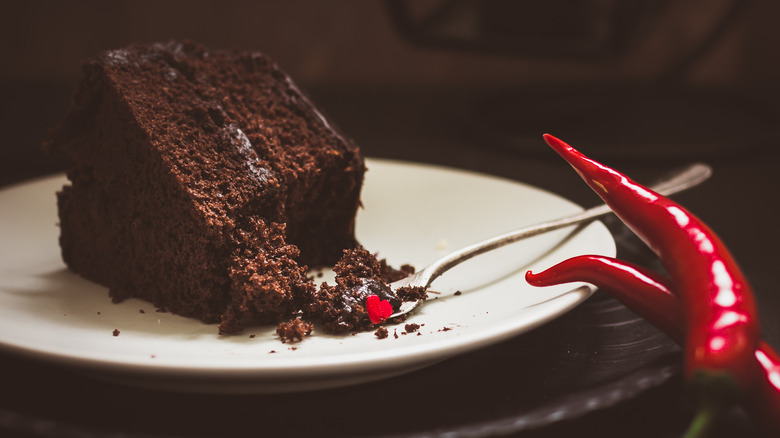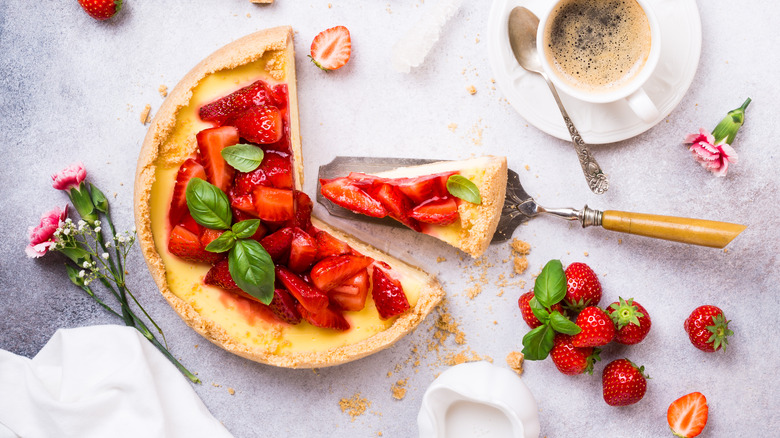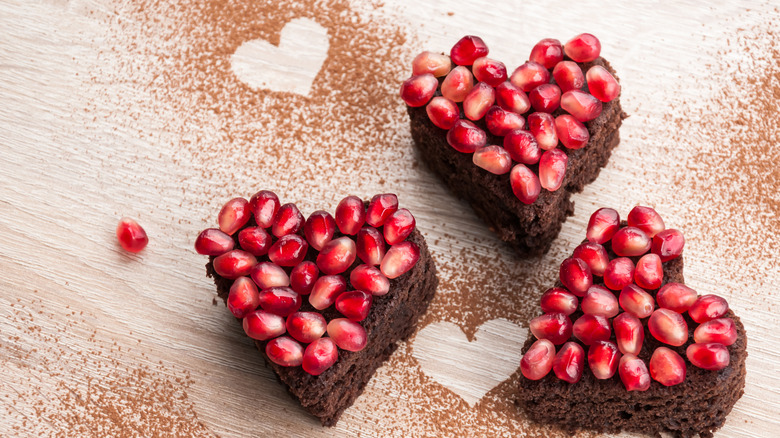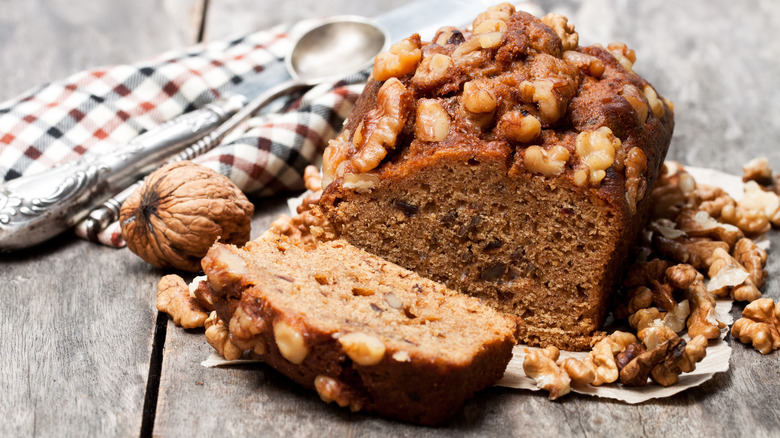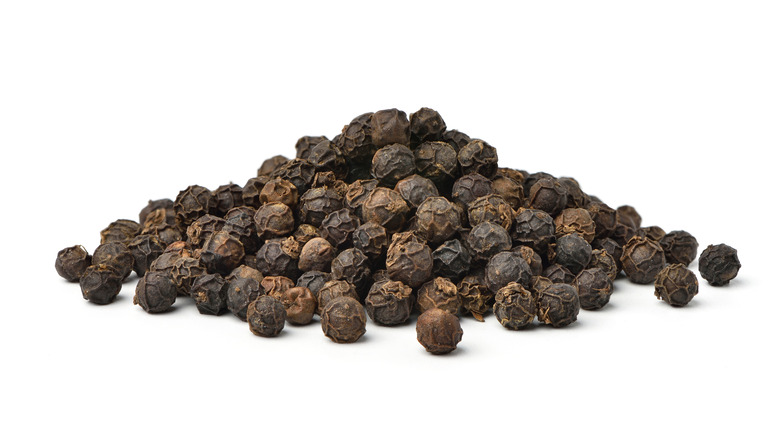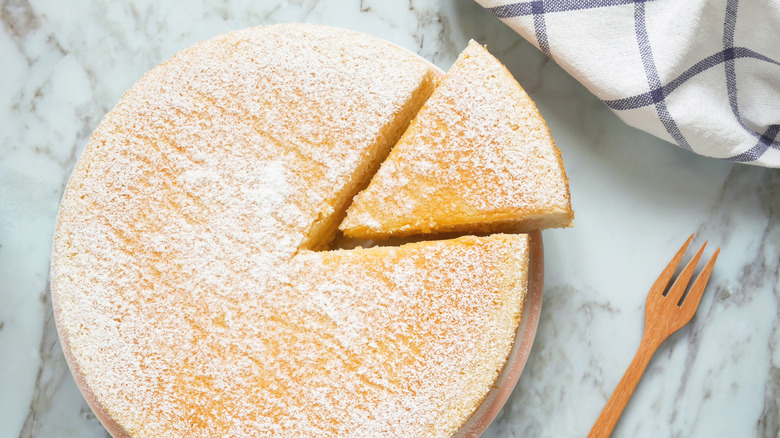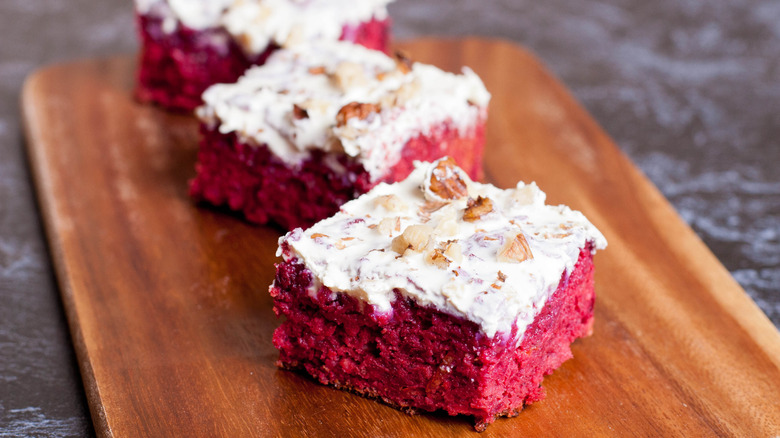10 Delicious Cake Flavors You May Have Never Seen
Cake is happy food. It's more than just the sum of its ingredients and icing because it's symbolic. People eat it at weddings and birthdays — celebrations of love and life.
Fortunately, there's so much cake in life, that most people have a go-to answer when faced with the question, "Chocolate or vanilla?" That's not a bad thing, but it might mean you've fallen into a bit of a cake rut. There are other, stranger flavors out there just waiting for you to try them. They are the wallflowers of bakeries everywhere.
Leisure Cooker says that the 10 most popular Google searches for cake flavors were: 1) chocolate, 2) red velvet, 3) carrot, 4) banana, 5) pineapple upside-down, 6) black forest, 7) ice cream, 8) bundt, 9) lemon drizzle and 10) sponge. Vanilla's not on there, but that may be because most people assume that searching for the word "cake" on its own means vanilla.
This article will take a look at even more obscure cake flavors, the ones that didn't make it onto the top 10 list. These are overlooked, but that doesn't mean they're unloved. Just try them and you'll see.
1. Plum cake
Imagine it's late summer. You're roughing it at Capitol Reef National Park's La Fruita Campground in Utah. This green valley, surrounded by colorful rock formations, is home to historic Mormon fruit orchards planted in the 1800s. One of the perks of staying here is picking the heirloom fruit yourself. Today, the plum trees' branches are dipping under the weight of ripe fruit.
Back in your camper with more plums than you can eat, you wonder if you could bake them into something. You can! The recipe for plum cake is so easy you'll be able to whip it up in your RV's mini-kitchen. It's an upside-down cake, so you put the fruit into caramelized sugar in the base of the pan and the batter on top. When it's baked, you put a plate on top and flip it. Later, enjoying a piece in your lawn chair, with your morning coffee, this cake will taste so delicious that you'll want to make another.
Not everyone is familiar with plum cake, but New Yorkers have loved it for years. Plum torte first appeared in the New York Times in 1983. It reran every summer after that until 1989. Upon the announcement that the paper was printing the recipe for the last time, editors received feedback from disgruntled readers. One wrote, "The appearance of the recipe, like the torte itself, is bittersweet. Summer is leaving, fall is coming. That's what your recipe is all about. Don't be grumpy about it."
2. Kraut cake
Abundance and scarcity have long driven kitchen creativity. The San Bernadino Sun reported about how too many cans of sauerkraut and a deficit of other ingredients drove Geraldine Timms to make a chocolate cake with it in the 1960s. The schoolchildren loved it, but may not have known about Mrs. Timm's secret ingredient.
According to Atlas Obscura, kraut cake, or don't ask cake, works especially well when it contains copious amounts of chocolate. Could this be to cover up the taste of the fermented cabbage? On the other hand, the acidity of the sauerkraut reacts with baking soda to make the cake rise. At the same time, it creates a moist, crumbly sponge, with a slightly funky taste.
Frank's Kraut shares the recipe for this special cake. There's nothing else surprising in it — just the pickled cabbage, which is the last ingredient to add. That's so the cake is already baking before the reaction between the kraut and baking soda goes flat.
3. Dark chocolate and chili cake
At first glance, chocolate and spicy chili peppers may not seem like compatible flavors, especially in a cake. The truth is that, for millennia, people in the Yucatan Peninsula have been mixing the two tastes, according to History.
Both cacao trees and pepper plants are indigenous to tropical Central America. Often, ancient Mayan households, and the Olmecs before them, made frothy cacao drinks, sometimes sweetened with honey, other times made spicy with chilis. They believed that chocolate had come to them from the gods. The brews they made with it played an important role in ceremonies, but were also a part of their daily diet.
Today, world-famous chocolate is on the shelves of most grocery stores and tends to be a sweet treat rather than a bitter drink. According to Leisure Cooker, chocolate cake is the highest-ranked Google search for cake flavors. Despite cacao's long journey from bean to powder in a cake mix box, it still pairs well with chilis. The recipe for Mexican chocolate cake, for example, simply adds a spoonful of chili powder and cinnamon for extra zing.
4. Strawberry and basil cake
Tomato sauce and pizza are two common places to find the leaves of sweet basil. Cakes do not host the aromatic herb as frequently, but yet basil can add a surprising layer of taste to desserts, according to "Basil: An Herb Society of America Guide." The publication notes that while basil is commonly viewed as an herb used to complement foods such as tomato or pesto sauce, it offers so much more.
Basil-infused strawberry shortcake is an example of a dessert where basil stands out and adds dimension. The process is simple: Cut up the strawberries; mix them with lemon, sugar, and basil; and then let them macerate for around an hour. This topping is perfect for shortcake, but could accompany cheesecake or vanilla ice cream just as easily.
Chef Hong Thaimee, featured on the "Rachael Ray Show," uses candied basil leaves — a typical Thai sweet — to decorate her desserts. Make them by sprinkling sugar on the leaves after brushing them with egg whites. These become crispy candy after setting overnight. Hong used them to adorn pumpkin pie, but they'd taste and look great on any cake with strawberries.
5. Pomegranate cake
Rip open a pomegranate to discover the jewel-like seeds inside. They sparkle like rubies and burst with flavor when you bite them. Adding pomegranate to a cake will give it a mythical Mediterranean twist.
According to Patricia Langely of the British Medical Association, this fruit has been a symbol of the unbreakable bond of marriage since the time of the ancient Greeks. Consider the story of Persephone, the unwilling wife of Hades. The god of the underworld kidnapped her from a forest, took her to his dark lair, and offered her refreshment. She only accepted a few pomegranate seeds, but they were her downfall.
When Persephone's mother, the goddess of agriculture, asked Zeus to mediate, he declared that since the young woman had eaten those seeds she would have to remain in the underworld for a part of each year. Each time she goes, her mother becomes so sad that all the plants shrivel and die (during winter). Upon Persephone's return, everything turns green and flowers bloom (the arrival of spring)
Persephone probably popped the seeds straight from the fruit into her mouth. She might have eaten more (and ended up with Hades longer) if she'd tried them in chocolate cake with pomegranate swirl. This recipe garnishes the dessert with pomegranate syrup and seeds. It's mouthwatering, but is it worth going to hell for?
6. Walnut cake
Walnuts have a sweet, buttery, but slightly bitter taste making them the perfect ingredient for sweet treats. Adding walnuts to cake does more than give it an irresistible flavor — these wrinkly little nuts could provide some health benefits.
When you crack open a whole walnut, you may have noticed that the flesh within looks a bit like a tiny brain. Coincidentally, eating walnuts regularly may positively augment cognition and brain function, according to a study published in Nutrients. That's not all walnuts can improve — Biology of Reproduction shared research showing that these nuts can increase the quality of sperm. When young participants in the study ate walnuts, their reproductive cells became more agile and stayed active longer.
Making something like chocolate Nutella walnut cake isn't hard at all and you've probably got all the necessary ingredients in your kitchen right now. The walnuts may give your health a boost, and your tastebuds will surely thank you.
7. Rum and pepper cake
There are times when the line between sweet and savory becomes blurred. Most people think of pepper as a spice used in savory dishes, but rum and pepper cake will shake up their carefully constructed thought process.
Modernity boxed people in this way. In The Atlantic, Ari Weinzweig described how the Romans would soak fruit in wine before adding spices such as peppers and cinnamon and boiling it. Indians and Medieval Europeans likewise, added the spice to sweet dishes. Today, pepper doesn't often make an appearance in desserts, but when it does, the result can be explosive.
Rum and pepper cake is the perfect, boozy way to end a dinner party. First, bake the peppery dough in a bundt pan. Then, soak it through with homemade rum syrup before topping it off with rum and confectioners' sugar glaze. A slice of this sweet spicy cake along with a steaming cup of coffee will warm up your guests before they head out into the crisp winter night.
8. Yogurt cake
You may be thinking, "Yogurt cake? Is this some sort of cake for people on diets? It must taste awful!" You'd be wrong. People add yogurt to cake because of the chemical reaction it produces and the texture it creates in the final product. Cutting down on fat is just an added bonus.
According to the University of California, Santa Barbara, baking soda needs to react with something acidic to make cake batter rise. Think of all the bubbles caused by mixing vinegar and baking soda. Sour, plain yogurt can play this role too. Good Housekeeping notes that this creates a cake that has a denser texture and richer flavor than those made with butter. It also adds a slightly tangy taste. This ingredient can improve most cakes: Just cut butter or oil by half and replace it with yogurt. So, if a recipe, like this one for sheet pan vanilla cake, calls for 2 cups of butter, add just one and substitute the other with yogurt.
Some cooking instructions already incorporate yogurt in their ingredient lists so you don't necessarily need to make any complicated kitchen calculations. For example, citrus and sea salt greek yogurt cake calls for 1/2 cup of the creamy stuff. The aroma that wafts from the oven while it bakes is the stuff of dreams, but eating it will take you straight to Santorini.
9. Beetroot cake
November 2nd was a dark, ominous night in North Duffield. Police were called out to the Derwent Bridge, according to the North Yorkshire Fire and Rescue incident summary. Something wasn't right — passersby had seen massive quantities of blood trailing along the road. To the relief of all involved, when the police arrived and inspected the scene with better lighting, they found that the red liquid was just innocent beet juice, probably dripping from some farmer's truck. They hosed the road down and continued on their way.
Beet juice has likely caused more than just this one misunderstanding. It has a surprising hue that can add color to almost any food — even cake –, just make sure everyone knows what it is. The root vegetable adds flavor and texture as well as color. As pointed out by the Seattle Times, the addition of beet juice can help with keeping a cake moist. Move over carrots (yes, carrot was number three on the most popular cake flavor list) and make way for up-and-coming beets.
Making chocolate beet pudding cake takes some extra prep time, though. Canned or boiled beets will not do — roasted until soft is the road to follow. Once the beets come out of the oven, mix them with the liquid ingredients in the blender. Add in the dry elements and bake. The result is a moist sponge with a lovely reddish tint.
10. Olive oil cake
Whether to use butter or vegetable oil in cake recipes is a question that has plagued bakers for some time now. According to King Arthur Baking, butter adds flavor while oil keeps cakes moist. Using both ensures a delicate crumb and keeps it from getting dry while ensuring plenty of taste.
There's a third option, though. Olive oil adds flavor, albeit different from butter, and moisture to baked goods. The California Olive Ranch suggests substituting in olive oil for butter at a 3/4 ratio. Take this recipe for sheet pan vanilla cake, for example. It includes 2 cups of butter, but if you're using olive oil, you should add just 1 1/2 cups. Be forewarned though, the quality of the olive oil is important. If it tastes great on its own, it'll be delicious in a cake. If not, well, it probably won't add the flavor you're hoping for.
While olive oil can be a substitute in any cake recipe, it can also stand out as the main flavor like in this olive oil cake. Here, the ingredients are straightforward: eggs, flour, baking powder, sugar, and olive oil. The simplicity is what makes it a perfect afternoon snack to share while sipping tea and exchanging gossip.
